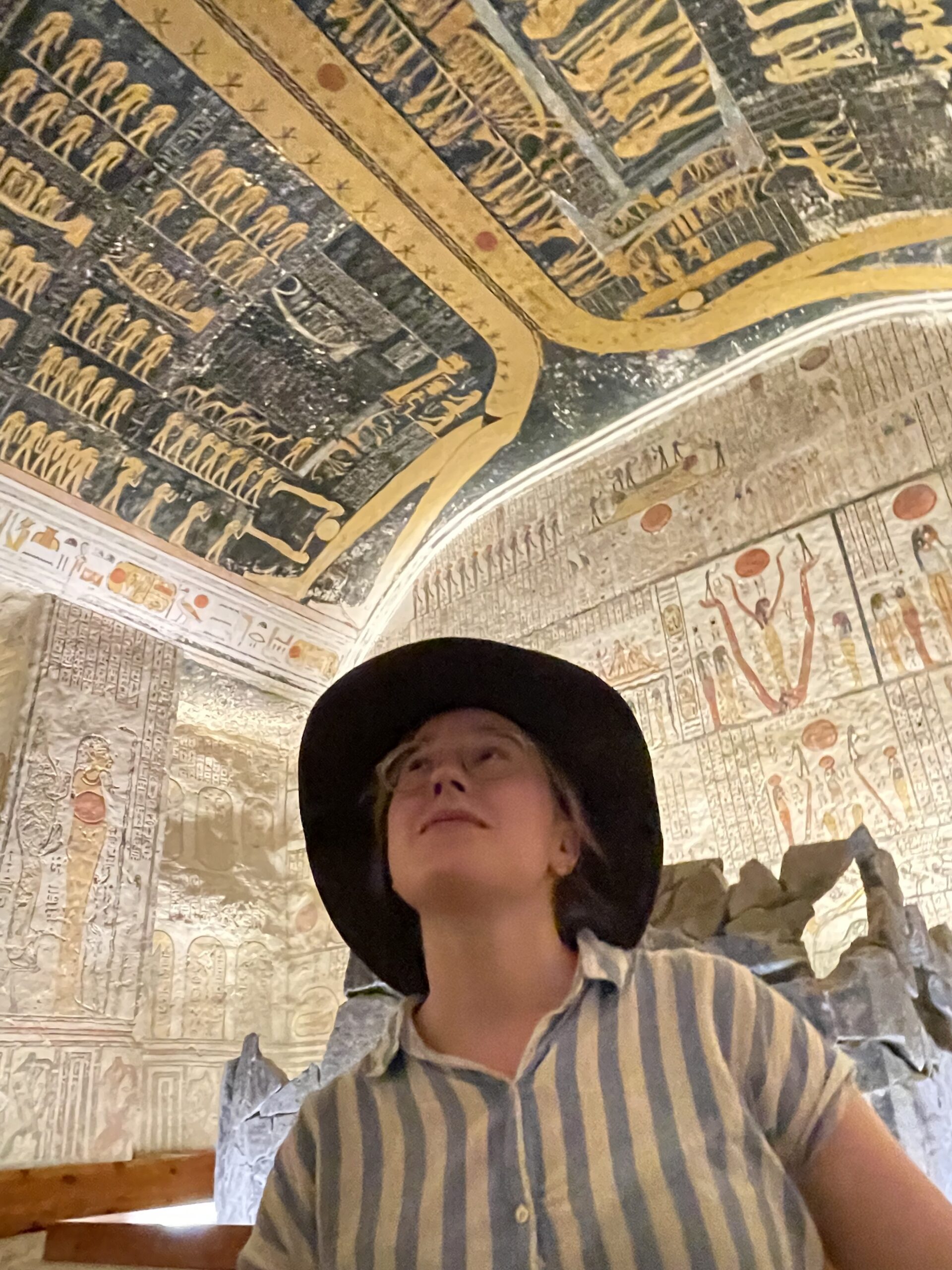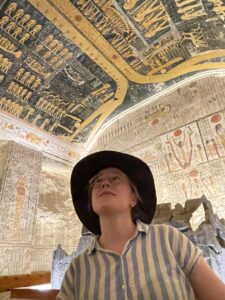The following is a summary of my Master’s Thesis at Cornell University. It took me two years to research and write, including a visit to Egypt to see the sites that I was writing about.
The final document was 47 pages long and included over a dozen images, maps, and diagrams.
I wanted to share this outline with students thinking about pursuing a Master’s Degree in Anthropology or Archeology so they could have a sense of what is involved in a writing a thesis.
Abstract
-
Focus: Expanding the study of structural violence to pre-modern societies using New Kingdom Egypt’s royal workers as a case study.
-
Method: Analysis of bioarcheological data from Tell el-Amarna, Deir el-Medina, and Tombos.
- Findings: Skeletal changes from intensive labor as invisible violence; nutrition and disease stress comparable to other sites.
Biographical Sketch
-
Author: Skyler Jackim, an archaeologist with a focus on public history and under-represented narratives.
-
Education: Major in Anthropology, minors in History and Education from The Ohio State University; graduate studies at Cornell University.
-
Experience: Research assistant in bioarcheology, work on repatriation of Indigenous remains, and research on human remains provenance.
Acknowledgments
-
Mentors: Dr. Matthew Velasco and Dr. Melissa Clark.
Introduction
-
Topic: Debate on what constitutes violence, focusing on structural violence.
-
Framework: Structural violence in bioarcheology, traditionally applied to modern societies.
-
Objective: Apply structural violence framework to New Kingdom Egypt, specifically Tell el-Amarna.
Theoretical Background
What is Structural Violence?
-
Definition: Violence caused by societal structures, not individual actors.
-
Impact: Adverse effects on health and well-being among marginalized populations.
Structural Violence and Bioarcheology
-
Application: Examining systemic health disparities in historic populations.
-
Markers: Physiological stress (occupational trauma) and lack of resources (nutritional deficiencies).
Why Examine Structural Violence in New Kingdom Egypt?
-
Argument: Structural violence framework applicable to ancient societies with strict hierarchies.
-
Focus: New Kingdom Egypt’s centralized state control and resource allocation.
Site Background
Worker’s Village at Tell el-Amarna
-
Historical Context: Akhenaten’s reign, religious reforms, and the creation of Amarna.
-
Workforce: 20,000-30,000 people, primarily state-sponsored workers.
-
Living Areas: Administrative north city, city proper, Workmen’s Village, and Stone Village.
Deir el-Medina and Tombos
- Deir el-Medina: Worker’s village for Valley of the Kings necropolis, state-provided resources.
-
Tombos: Egyptian city in Nubia, administrative and redistributive center, middle-class population
Materials
-
Sources: Skeletal collections from Amarna, Deir el-Medina, and Tombos.
-
Excavations: Amarna Project, early 20th-century excavations at Deir el-Medina, and University of California excavations at Tombos.
Results and Discussion
Cribra Orbitalia and Porotic Hyperostosis
-
Indicators: Non-specific disease indicators of childhood stress.
-
Findings: High rates of childhood stress at Amarna, similar to other New Kingdom sites.
Occupational Stress
-
Indicators: Degenerative joint disease (DJD) and vertebral osteophytosis.
-
Findings: High rates of DJD at Amarna, indicating physically demanding labor.
Interpersonal Violence
-
Indicators: Sharp-force trauma.
-
Findings: Evidence of state-sponsored corporal punishment at Amarna.
Conclusion
-
Summary: Workers at Amarna faced extreme socio and biophysical stress, similar to modern structural violence.
-
Implications: Expanding structural violence framework to pre-modern societies can provide insights into historical power dynamics.
-
Future Research: Broaden demographics to include other worker villages and non-elite groups for a comprehensive understanding.




